Because cacti all have similar qualities, there’s not much difference in their needs. These plants are easy to care for, and don’t require any serious maintenance.
When potting or growing your cactus, there are a few things that you’ll need to keep in mind. These plants are not typical houseplants, so there are a few special considerations. Once they’re in the right environment though, they’re one of the simplest plants to look after.
The Best Soil for Cacti
Keep in mind that cacti are originally from areas that don’t have a lot of topsoil, or water.
When growing these plants indoors, you’ll want to recreate that sort of environment. Simply throwing a cactus into a pot with regular potting soil is a sure way to kill it.
Instead, you want to focus on soils that have good drainage, and that don’t retain moisture.
Cacti have adapted to be drought-tolerant, so they hate having their roots soaked in water.
They develop root rot very easily, so you want soil that will stay wet long enough to have the roots soak in water, but will still dry out quickly.
The easiest way to get the right soil is to simply buy it at your local garden center. Most stores have special cactus soil available.
If you don’t want to purchase the soil, you can also make it yourself.
There’s a lot of debate as to what constitutes the best soil mix, so try out a few options to see what you prefer.
In general, it’s good to have a 1 to 1 ratio of three different elements: a fine grit, regular potting soil, and larger material for drainage.
For your fine grit, you can use something like sand or pumice stone. Any fine ground, rocky substance will work. This material helps with drainage since it doesn’t soak up water.
For the larger drainage material, you can use gravel or pebbles. Any larger rocky material will work for this case. This addition helps keep the soil from being too packed, which improves drainage as well as aeration in the soil.
If you notice that your soil isn’t retaining any moisture, you can add in some peat to supplement.
Peat helps soak in water, but it also dries quickly. That’s what makes it a popular addition to cactus soil mixes. It’s a good option for tropical cacti species.
You can also use clay soil as an alternative. Just make sure that you don’t pack it tightly. You may need to add in some gravel or sand to aid in drainage if you notice that the clay isn’t drying out well.
Remember that the goal is to make sure that water drains easily from the pot, and doesn’t stick around for too long in the soil. As long as these two qualities are met, your cactus should be happy.
The Best Pots for Cacti
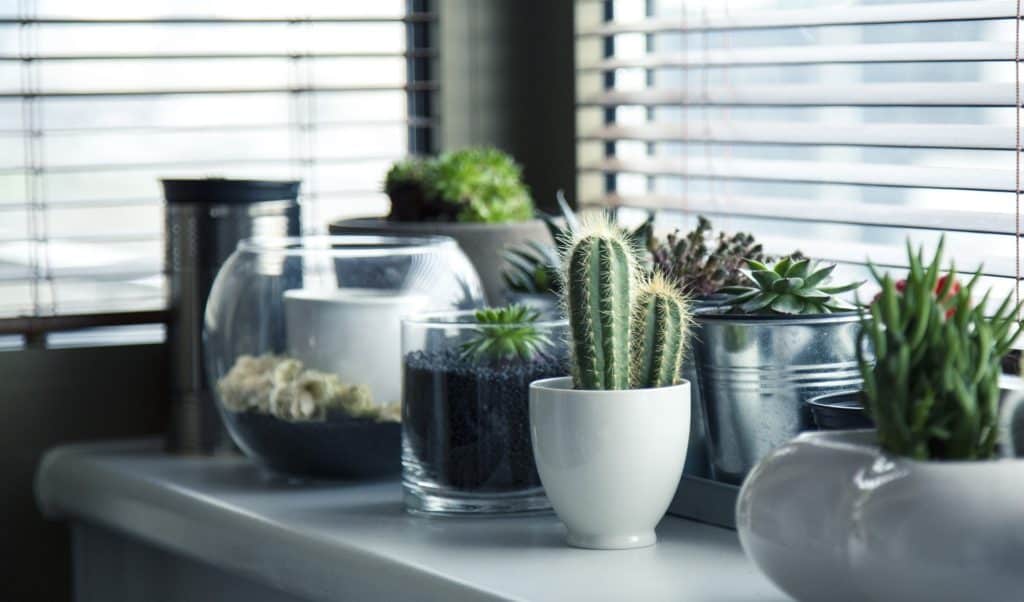
When looking for a pot for a cactus, drainage is the most important feature.
You need to have a pot that has a large hole, or multiple holes at the bottom, to allow water to pass through.
Terra cotta and ceramic are recommended materials since they can help draw moisture out of the soil.
However, you don’t have to use these. A pot of any material will work just fine, so long as you have a good soil mix inside of it.
Depending on the type of cactus, you may also want to look for a pot that’s a little taller than it is wider.
In their natural habitat, cacti are used to having their roots grow far down into the soil, in search of water.
As such, they’re happier when they have plenty of vertical room to stretch their roots.
How to Water Your Cactus
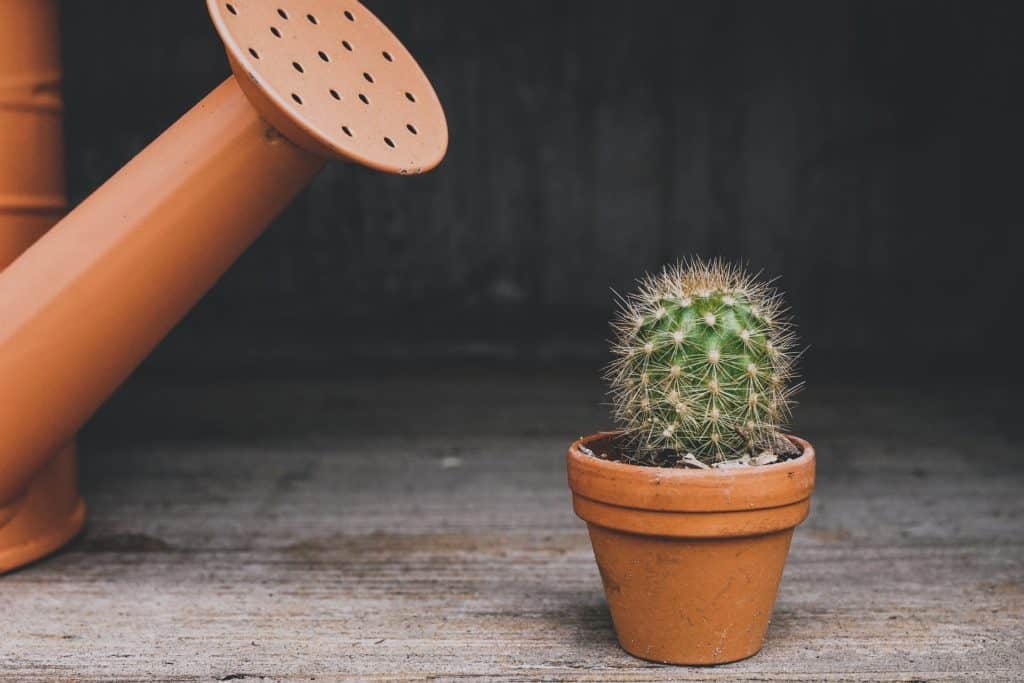
When it comes to watering your cactus, the general rule of thumb is to water it once a week. This gives plenty of time for the soil to dry out between waterings.
Depending on your area, you may find that one week doesn’t work for you. In a dryer climate, you may need to water every five or six days, to accommodate for the fact that the soil dries quickly.
In a humid environment, you may have to water every nine or ten days, since water tends not to evaporate as quickly in high humidity.
If you’re not certain, just pay attention to your plant.
An underwatered cactus will start to shrivel up, or brown at the edges. An overwatered cactus will be soft and may lose some of its color.
Pay attention to these signals, and adjust your watering accordingly.
When to Fertilize Your Cactus
All plants need to be fertilized in their growing season, which should span the warmer months during spring and summer.
During the colder months, your plant isn’t focused on new growth, so it doesn’t need any extra help.
For cacti, purchase a low-nitrogen, or cactus specific fertilizer.
Different fertilizers will have different application methods, so follow the directions accordingly.
Most fertilizers will have you wait five to eight weeks between applications, so don’t get too ambitious.
Cacti like to grow slowly, so even with fertilizer, you’ll have to be patient.
The Best Light for a Cactus
Contrary to popular belief, cacti don’t need full sun, all the time.
They are sun-loving plants, but most species are just fine with around three to four hours a day.
Place them near a window, or supplement a shaded area with a growing lamp.
There are also species that have shade tolerant varieties.
The chin cactus is just one example. While these plants will still need light, they need a lot less than other species.
This makes them ideal for offices or other places where they won’t see as much sun.
How to Keep Bugs Off Your Cactus
Cacti are prone to the same old pests that all house plants are.
Common offenders are mites, scale, mealy bugs, and gnats. All pests should be taken care of since they can drain resources from the soil, or damage the plant itself.
Fungus gnats are easy to deal with since they typically come from the soil. You can rotate the top layer of soil to help keep the gnats from hatching.
You can also keep a bit of sticky flypaper nearby to catch any fully grown gnats.
For pests that live on the plant, such as mites, scale, and mealybugs, you’ll want to apply a little bit of rubbing alcohol directly onto the pests.
In this case, you want to avoid using an insecticidal soap, since this can damage the cactus.
In order to prevent bugs from making a home on your plants, be sure to clear out any dead leaves or blooms that may collect on the soil, and avoid overwatering.
When to Repot a Cactus
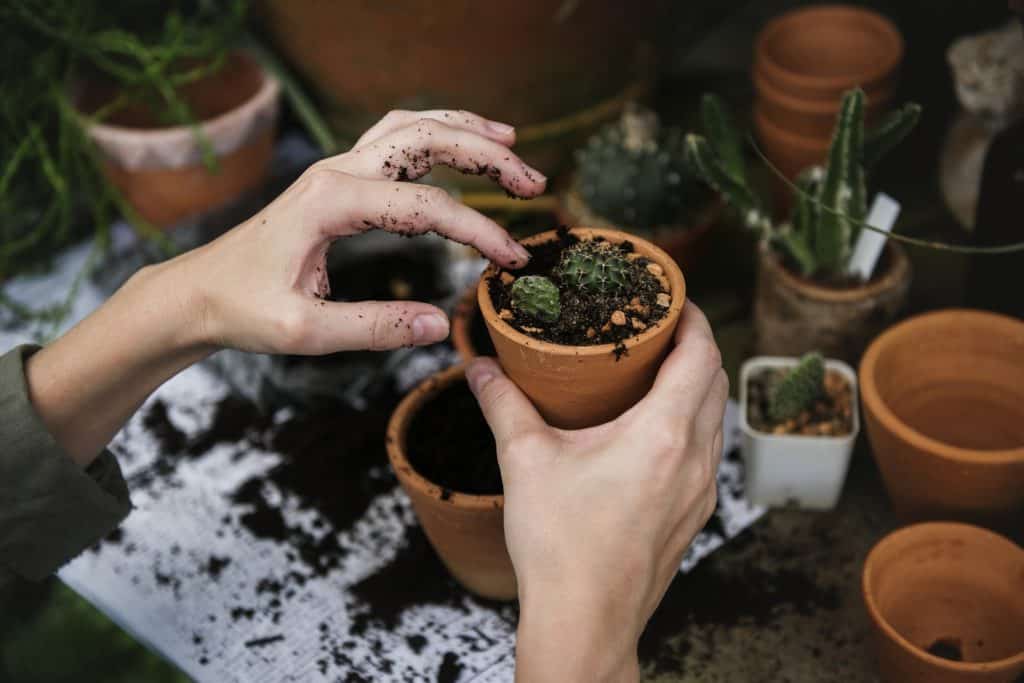
At some point in your cactus’s life, you’ll need to repot it.
If your cactus is a type that grows wider as it gets older, measure the distance from the rim of the pot, to the base of the plant.
As long as there’s ¼ to ⅓ of an inch left between the rim and the base, your plant should be fine.
For other varieties, watch the roots. If you can see roots in the drainage holes, your plant needs to be repotted.
How to Pot a Cactus
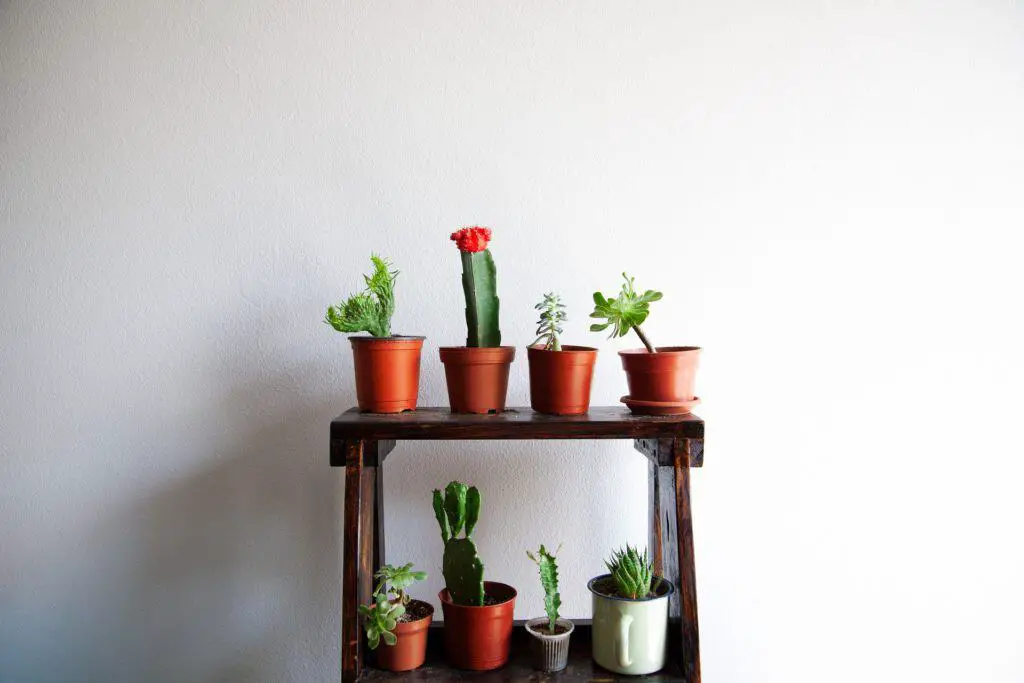
Before you pot or repot a cactus, make sure you have the right soil, as this is one of the most important factors for a happy plant.
Start by filling the pot with soil about halfway between the bottom of the pot, and about ½ an inch to an inch from the top of the pot.
You don’t want to fill the pot all the way to the top, so plan on leaving that gap throughout the process.
When the pot is about half full, hold the plant over the space where it will eventually sit.
From that height, you want the roots to be able to reach the bottom of the soil, without having to be folded up too much.
Remember, cactus roots like to grow downwards, so you don’t want to bunch them up at the top of the soil.
Add soil or remove it until the roots have a comfortable amount of room.
From there, hold the plant up and continue to fill the pot with soil.
As you fill it up, the plant should be secure (not wiggling around easily) but the soil should still be loose.
If the soil is too tightly packed, the roots won’t be able to breathe or dry out, and the plant will die.
As you reach the top, near the base of the plant, keep pouring in the soil lightly.
Avoid the temptation to tamp it down too much. And don’t forget that the soil should not reach all the way to the top of the pot.
When you’ve got the right amount of soil and the plant is secure, water the plant until the water runs through the drainage holes at the bottom.
If you notice that the soil level has gone down drastically, add in soil on top until it reaches the proper height.
After that, you’re done. Your plant may be unhappy for a while after you move it since plants generally like to stay in the same spot, but as long as you care for it properly, it will readjust to its new home.
Growing a Cactus From Seed
Another option for getting a cactus is to grow one from seed.
Seeds are a cheaper, but much slower alternative to buying plants at the store.
It’s also a little more high maintenance since seeds require a lot of care and attention.
In order to grow a cactus from seed, you’ll need to first purchase some seeds.
Get a package that has at least ten seeds, because not all of them will germinate. A typical germination rate is anywhere from 60 to 80 percent, so keep that in mind.
You can use any pot to plant the seeds, but it is easier to grow them in special seedling trays.
These trays are designed to be temporary, so it’s easy to pop out the individual baby plants and replant them when they get big enough.
They’re also easy to purchase online or at your local garden center.
To plant the seeds, place them lightly into the soil, and sprinkle about ¼ an inch layer of soil over them. (This is just a general amount that works for most seeds. Double-check the instructions for your particular seeds, in order to see if they have different requirements.)
Keep in mind that you want to use cacti potting soil for this.
Water the seeds by misting the surface of the soil whenever it dries out. If you don’t have a spray bottle, just sprinkle water over the top with your fingertips.
From there, it’s all about patience.
Some cacti species can take as much as half a year before they get big enough to be considered baby plants.
When they get bigger, or when you notice roots sticking out of the bottom of the seedling tray, it’s time to repot.
While it does take a long time, this option is very rewarding, as you get to care for your cactus from “birth”, and you can get a lot of cacti for a fraction of the cost.
Types of Indoor Cactus Plants

Now that you know how to care for your cactus, it’s time to pick one out.
Most cacti have the same easy growing requirements, so you don’t have to limit yourself as much as you do with other, more finicky houseplants.
As long as the plant has access to light, location won’t be an issue.
With that in mind, have fun with your selection. Don’t be afraid to choose a plant just because you like the way it looks. There are a lot of cool cacti, from the typical barrel shape to ones that can grow as tall and as a tree.
Here are just some of the great species that are easy to grow indoors:
Bunny Ear Cactus
This species is as cute as its name suggests.
The skinny pads grow in round shapes that stack on top of one another, so you end up with parts that look exactly like the silhouette of a rabbit or mouse.
They’re an adorable, interesting variety that can grow pretty full when well cared for.
Saguaro Cactus
Most people know this as the famous, tall cactus species that grows in the Sonoran desert. In fact, when people think of a cactus, it’s probably this one that comes to mind first.
Luckily, you can also grow these iconic plants indoors.
The majority of indoor options are going to be much younger, barrel-shaped plants. They’ll eventually reach their familiar, tall state, but you’ll have to wait a few decades.
These plants are remarkably slow growing.
Prickly Pear Cactus
These plants are famous for their tasty, edible fruit! That’s right, you can actually eat the fruit that these cacti produce.
If you juice the fruit, you can even use the liquid to make delicious drinks. And if that’s not enough for you, these plants also happen to be really gorgeous.
Their large, flat pads are covered in long spines, and they grow bright pink blooms. Keep in mind, any plant will need extra attention and care in order to flower and fruit, but in this case, it’s definitely worth it.
Chin Cactus
This type of plant comes in some darker shades if green is not your color. They also happen to have bold, beautiful flowers.
As mentioned earlier, this best benefit of this particular option is that it has shade tolerant varieties.
If you’re worried about not having enough light, try this plant.
Rat Tail Cactus
Although its name isn’t too attractive, this type of plant is actually a pretty choice.
It gets its name from the fact that the different segments of the plant grow downwards, in long tail-like structures.
This makes it a great option for anyone who wants a low maintenance hanging plant.
Christmas Cactus
Don’t let the name of this plant fool you; it’s not one that you can only break out during the holidays.
Like the rat tail cactus, this plant is another option that has segments that grow outwards and downwards.
It´s a very common house plant, popular for its pink flowers.
Pencil Cactus
This species is a vertical growing cactus, which can grow to about two feet tall.
The pencil moniker comes from the thin, straight segments that grow out from the base of the plant. If you’ve ever wanted a tree for your home, this one is a good option.
It gets decently tall, and it’s much, much easier to care for.
Pincushion Cactus
There are a ton of species that fall under this particular type of cactus, so you have a lot of options for this one.
Most have that traditional barrel shape and bloom delicate pink flowers. They also tend to be small, so they make a cute option for anyone who needs something that doesn’t take up a lot of room.
They’re perfect for desks, workspaces, or shelves.
Ballon cactus
This is another well-known species of cactus, that should look familiar to most people.
The distinctly round shape, and uniform ridges with yellow spines are a common sight in most garden centers.
With little pops of white and yellows throughout, this one is an unexpectedly colorful option.
Old Man Cactus
The name of these plants may be considered a little rude, given the fact that it refers to the delicate white hairs that wrap around this plant.
But these unique cacti are a really fun addition to any houseplant collection. Just keep in mind that houseplant pests can hide deep within the hairy exterior.
You’ll want to keep an eye on these plants and eliminate any potential causes for pests.
Fairy Cactus
This is another tall cactus that you can grow indoors. Although it will take quite a while, they can grow to be six feet tall.
That’s quite impressive for a houseplant. They look interesting as well, with their segments growing upwards and outwards in a way that’s reminiscent of turrets on a castle.
Why You Should Grow a Cactus
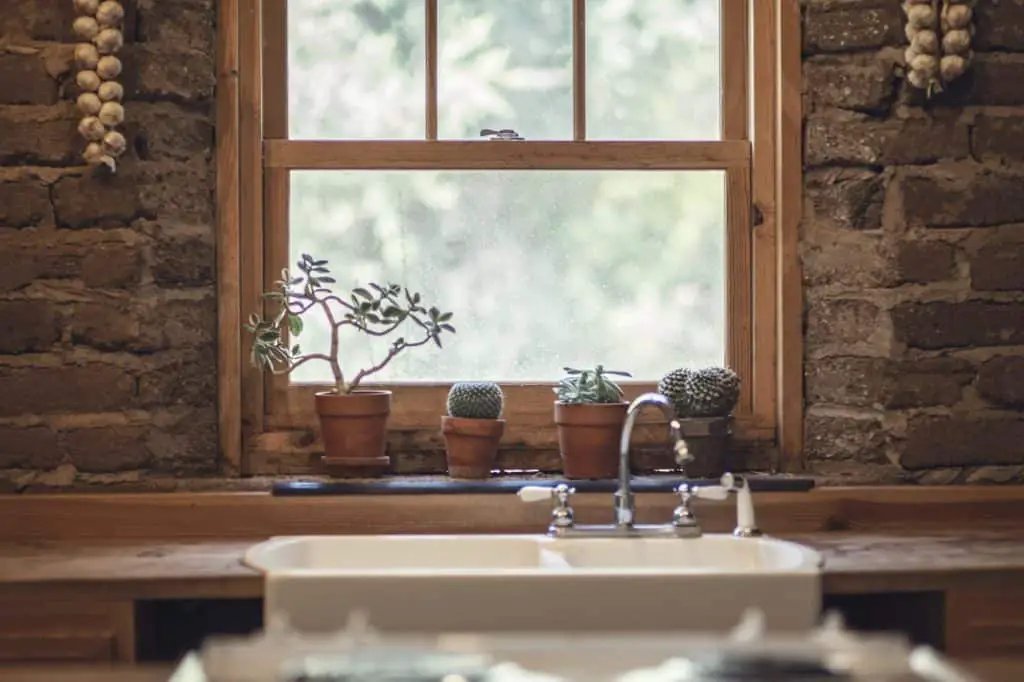
Cacti have a reputation as being among the easiest houseplants to grow and for good reason!
Since these plants originate from the desert and other dry climates, they don’t require a lot of water or care.
They’re used to rough conditions and are happy to be left to themselves.
This makes them the ideal option for any beginner who wants to test out their ability to care for a plant.
They’re also great for offices, or for people who travel a lot. In both cases, the plant will have to go untended for at least a few days, so you want something tough that can last on its own.
They may be slow-growing, but these plants are definitely not boring. They can grow into interesting and unusual shapes, and many species have beautiful blooms.
There are even some that grow edible fruit.
It’s easy and rewarding to learn how to grow a cactus indoors in a pot, so why not give it a try?
